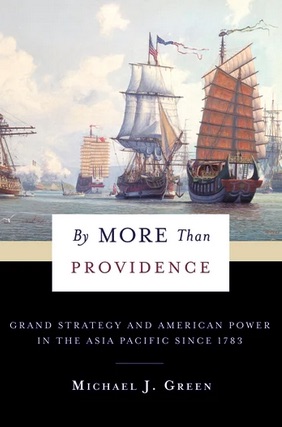Soon after the American Revolution, ?certain of the founders began to recognize the strategic significance of Asia and the Pacific and the vast material and cultural resources at stake there. Over the coming generations, the United States continued to ask how best to expand trade with the region and whether to partner with China, at the center of the continent, or Japan, looking toward the Pacific. Where should the United States draw its defensive line, and how should it export democratic principles? In a history that spans the eighteenth century to the present, Michael J. Green follows the development of U.S. strategic thinking toward East Asia, identifying recurring themes in American statecraft that reflect the nation's political philosophy and material realities.
Drawing on archives, interviews, and his own experience in the Pentagon and White House, Green finds one overarching concern driving U.S. policy toward East Asia: a fear that a rival power might use the Pacific to isolate and threaten the United States and prevent the ocean from becoming a conduit for the westward free flow of trade, values, and forward defense. By More Than Providence works through these problems from the perspective of history's major strategists and statesmen, from Thomas Jefferson to Alfred Thayer Mahan and Henry Kissinger. It records the fate of their ideas as they collided with the realities of the Far East and adds clarity to America's stakes in the region, especially when compared with those of Europe and the Middle East.
- Table of Contents
- Note on Korean, Chinese, and Japanese Terms
- Acknowledgments
- Introduction
- I. The Rise of the United States
- 1. “A Theatre for the Exercise of the Most Ambitious Intellect”: Seeds of Strategy, 1784–1860
- 2. “How Sublime the Pacific Part Assigned to Us”: Precursors to Expansion, 1861–1898
- 3. “I Wish to See the United States the Dominant Power on the Shores of the Pacific”: Grand Strategy in the Era of Theodore Roosevelt
- II. The Rise of Japan
- 4. “Leave the Door Open, Rehabilitate China, and Satisfy Japan”: Defining the Open Door, 1909–1927
- 5. “Between Non-resistance and Coercion”: The Open Door Closes, 1928–1941
- 6. “We Have Got to Dominate the Pacific”: Grand Strategy and the War Against Japan
- III. The Rise of the Soviets
- 7. “The Overall Effect Is to Enlarge Our Strategic Frontier”: Defining Containment in the Pacific, 1945–1960
- 8. “Anyone Who Isn’t Confused Really Doesn’t Understand the Situation”: Asia Strategy and Escalation in Vietnam, 1961–1968
- 9. “An Even Balance”: Nixon and Kissinger’s Redefinition of Containment in Asia, 1969–1975
- 10. “The President Cannot Make Any Weak Moves”: Jimmy Carter and the Return of the China Card, 1977–1980
- 11. “To Contain and Over Time Reverse”: Ronald Reagan, 1980–1989
- IV. The Rise of China
- 12. “The Key to Our Security and Our Prosperity Lies in the Vitality of Those Relationships”: George H. W. Bush and the Unipolar Moment, 1989–1992
- 13. “Engage and Balance”: Bill Clinton and the Unexpected Return of Great-Power Politics
- 14. “A Balance of Power That Favors Freedom”: Strategic Surprise and the Asia Policy of George W. Bush
- 15. “The Pivot”: Barack Obama and the Struggle to Rebalance Asia
- Conclusion: The Historical Case for Asia Strategy
- Notes
- Index
- Illustrations

